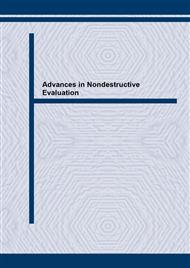[1]
S. C. Choi : Gas Safety Journal, Vol. 26, No. 5 (2000), pp.25-33.
Google Scholar
[2]
O. S. Lee and H. J. Kim : Proceeding of Korean Society of Mechanical Engineering, Vol. 23, No. 11 (1999), pp.2096-2101.
Google Scholar
[3]
P. Hopkins and D. G. Jones : In Proceedings of the 11th International Conference on Offshore Mechanics and Arctic Engineering, ASME, Vol. V, Part A (1992), pp.211-217.
Google Scholar
[4]
ANSI/ASME B31-1985 : Manual for Determining the Remaining Strength of Corroded Pipeline (Supplement to ANSI/ASME B31G Code for Pressure Piping. The American Society of Mechanical Engineers, New York 1985).
Google Scholar
[5]
F. Caleyo, J. L. Gonzalez and J. M. Hallen : International Journal of Pressure Vessels and piping, Vol. 79 (2002), pp.77-86.
Google Scholar
[6]
J. F. Kiefner and P. H. Vieth : Oil and Gas Journa, l August 6 (1990), pp.56-59.
Google Scholar
[7]
Denny R. Stephens and Robert B. Francini : A Review and Evaluation of Remaining Strength Criteria for Corrosion Defects in Transmission Pipelines (Proceedings of ETCE/OMAE 2000 Joint Conference, ETCE2000/OGPT-10255 2000).
Google Scholar
[8]
Y. P. Kim, J. H. Baek, W. S. Kim and Y. T. Kho : Korean Society of Mechanical Engineering, Vol. 26, No. 1 (2002), pp.203-210.
Google Scholar
[9]
Y. G. Kweon, B. H. Yoon and R. W. Chang : Journal of corrosion Science Society of Korea, Vol. 21, No. 4 (1992), pp.301-309.
Google Scholar


